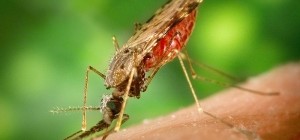
While avian influenza viruses are notoriously diverse, human adapted influenza is quite similar from place to place, evolving only relatively slowly and with strain replacement…

Early warning signals for critical transitions have now been described from a number of ecological and geophysical systems. Most of these signals reflect a dynamical…

Two new papers from our study of the ecology of avian influenza viruses are now available. The first paper, by Barton et al., derives an…

This year is the 20th anniversary of the Programme on Epidemic Models held at the Isaac Newton Institute for Mathematical Sciences in Cambridge, UK. In…

Drew Kramer, John Drake and colleagues at Old Dominion University have published a new model for the accumulation of bacterial species on organic aggregates. The…

Vector-borne diseases in urban environments are a major public health issue in the developing world. The outbreak of West Nile virus (WNV) in New York…

Wildlife and plant diseases can reduce biodiversity, disrupt ecosystem services and threaten human health. Emerging pathogens have displayed a variety of spatial spread patterns due…





